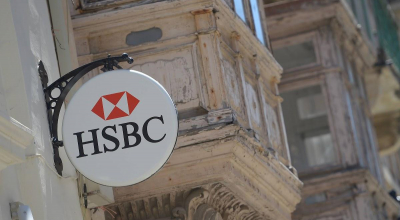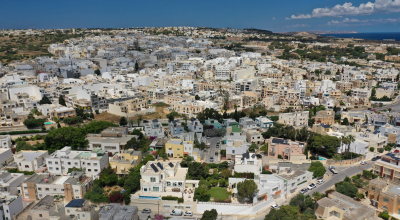French spies inside an ordinary Maltese house: how DGSE tracked weapons in Libya from Balzan
French secret service agents used Malta as a base to monitor the delivery of weapons to Libya • Sources contradict stories of missing black boxes and the alleged French Customs operation of the Fairchild Merlin aircraft


Ruthville is a terraced house in a quiet residential neighbourhood in Balzan, just a block away from the Infetti football ground. Situated in Triq il-Kannizzata, the house could pass off as a normal building in a neighbourhood that includes two large secondary schools and a confectionary just around the corner.
But two years ago, this two-storey building with an underlying garage served as a base station for a French spy operation on Libya.
That operation ended in tragedy on the morning of the 24 October, 2016 when a small aircraft crashed on the road between Safi and Kirkop.
The aircraft, a Fairline Merlin, had just taken off from Malta International Airport. Eyewitnesses recounted how the aircraft was ascending when it nosedived into the ground and exploded upon impact.
All five people on board died.
A government statement had said the Frenchmen formed part of a French customs surveillance operation over Libya and had been going on for five months. However, the French customs later denied it was involved in any such operation, with French newspaper Le Monde reporting that the men on board were secret agents.
The French defence ministry later confirmed that some of the men on board were operatives but the whole incident remained shrouded in mystery.
The names of the deceased were never made public, except that of the captain, Fabien Pierret, who was a private contractor tasked with flying the aircraft.
Now, new information that has become available to MaltaToday indicates that the five people on board the plane formed part of a nine-men cell based in the Balzan house.
The secret agents, acting for the French government were flying reconnaissance missions over Libya to specifically track the movement of French armaments sent to the North African state.
A source close to the investigation said the house was rented to the nine people for €20,000 a year.
MaltaToday can reveal the names of three other people killed in the crash, two of which were members of the DGSE, France’s external intelligence agency.

Who was on the plane?
Captain Fabien Pierret and first officer Marcel Bourret flew the aircraft on that fateful day.
They were both contractors of CAE, the Luxembourg company specialising in aerial surveillance that designed and owned the aircraft.
They were working for GAM56, the transportation unit of the French secret service.

The three other crew members on the plane - Alexandre Chaissant, Vincent Pouplet and a third person whose name is not available to MaltaToday – were members of the DGSE, France’s external intelligence agency.
Pouplet was specialised in electronic warfare and geospatial intelligence. And his specialisation appears to have been key to the operation based in Balzan.

Tracking French weapons
The source said that testimony gathered by inquiring magistrate Doreen Clarke painted a classic spy film atmosphere in the house. Agents sitting behind their computers would receive “live footage” from the aircraft and process the information.
“Contrary to what had been said in public, the aircraft wasn’t carrying out surveillance of human and drug trafficking routes, but making sure that French weapons were being supplied to the right people in Libya,” the source said. In 2014, France secured $9.1 billion in arms exports, an all-time high.
All this despite the UN arms embargo on Libya, preventing the supply of weapons to any faction in Libya unless approved by the Sanctions Committee of the UN Security Council. MaltaToday cannot confirm whether these weapons were government property or whether they were supplied by private entities. What is certain, however, is that the spoor of moving weapons was being tracked by French spies in Balzan.
Police officers and court experts who visited the Balzan house on the same day the accident happened found no trace of the covert operation.
“It appeared as if the house had been stripped of the equipment despite information gathered by the inquiry on the operation going on inside the building,” the source said.
The scene was described as one that involved a quick getaway. “There were remnants of wire cords still sticking out of the concealers, clearly ripped in a hurry, and the remains of a dish aerial on the roof,” the source said.
But this was not the only hurdle the Maltese investigative authorities faced.
,_luxembourg_pp1313341186.jpg)
Missing black boxes
The source said that two black boxes and three laptops were retrieved from the crash site despite French authorities claiming in a report published last week that the aircraft was not supplied with black box technology.
The black boxes and one of the laptops had gone missing soon after French investigators came to Malta, the source said.
It appears that NET News had initially reported the story of the missing evidence but, as of today, this article is no longer available online.
These were not the only documents to go missing. The source said documents on the aircraft’s maintenance supplied by CAVOK, a subsidiary of CAE, so crucial to the investigation, had been sequestered by the French secret service.
These documents were not accessible to the Maltese court, effectively stalling the case.
Air accident report
The report published by the BEA-É, an agency tasked with investigating air accidents involving military and other aircraft used by law enforcement agencies in France, blamed lack of adequate maintenance on the aircraft’s modifications for the Malta crash.
It also reserved some scathing remarks on the Maltese control tower, noting it was not the first to sound the alarm that something was wrong with the aircraft.
The source said the French decision to publish the air accident report was questionable given that Malta had jurisdiction over the investigation.
When contacted, police Inspector Melvyn Camilleri, who is heading the police investigation into the accident, said investigators were not endorsing the French report. “We absolutely do not agree with their conclusions,” he said.
Camilleri, however, would not elaborate and refused to comment on the information in MaltaToday’s hands. Court-appointed expert Colin Galea, an aircraft engineer, also refused to comment on the Maltese inquiry’s findings.
Kenneth Chircop, CEO of Malta Air Traffic Services (MATS) said, the company had collaborated fully with the Maltese investigation. “The investigation was conducted with the full collaboration of MATS and without any hindrance whatsoever. While the inquiry is still ongoing, it is prudent for the company not to comment further on the accident,” Chircop said.
Attempts to contact Magistrate Doreen Clarke proved futile.
What the French investigation said about the plane crash
- Immediately after the crash, the alarm was triggered by the crew of the airliner and this was relayed by the control tower to the fire service; the investigators expressed astonishment at the fact that the Maltese air traffic controller was not the first to report the event.
- The two engines of the aircraft were sent to France for inspection but results were inconclusive; this was done, the investigators said, because Malta was non-resourceful in this department.
- The crash was likely caused by a technical malfunction, but only a flight data recorder could have enabled the BEA-É to confirm this hypothesis; regrettably, the aircraft was not equipped with this technology.
- The report calls for the investigation into why the controller in the control tower at the time of the accident was not the first person to detect said accident
Reaction to the French findings
- The source close to the investigation told MaltaToday that American experts had told Maltese counterparts that they did not believe the aircraft was not supplied with black boxes
- The source said that CAVOK, the CAE subsidiary group that examined the engines, was not forthcoming with the Maltese authorities and that the documents outlining the cause of the crash were sequestered by the French investigators — it was never a question of lack of Maltese resources
- The same source said that the part in the French report that suggests the aircraft was not supplied with recorders is a deliberate fabrication since an eyewitness known to MaltaToday had seen them prior to going missing shortly after French experts came to the island
Weapons in Libya: The French connection

The covert operation from a Balzan house two years ago was specifically tasked with tracking the delivery of French weapons to Libya.
Little else is known of the operation so far. It remains unclear whether the weapons being tracked were supplied by the French government to friendly Libyan militias, or whether they were private sales in breach of the UN weapons embargo.
The sale of French weapons to Libya had been documented in a leaked classified email to former US presidential hopeful Hillary Clinton, when she was still secretary of state.
The email from 2011 was released by WikiLeaks, a whistle-blower website, in 2015. The email on the subject of France’s interest in Libya made reference to a General Abdelfateh Younis.
In the email, Younis is described as having been promised arms and military trainers to quell Saif al-Islam Qaddafi’s forces, making sure that France gains a greater share of Libyan oil production and increase its influence in North Africa.
In 2011, Libya was in the midst of a civil war as rebel forces backed by NATO deposed Muammar Gaddafi. Libya has since remained an unsettled country with various militias and tribes controlling swathes of territory.
A UN-backed government based in Tripoli has little effective control over the territory. A rival parliament based in the eastern city of Tobruk is backed by General Khalifa Haftar, who heads the Libyan National Army that controls parts of the east.
The Malta-based spy operation that came to a tragic end in 2016 could possibly indicate that France maintained its interest in supplying weapons to Libyan factions, way beyond 2011.



.png)
.png)

.jpg)


.png)

.jpeg)




.png)



